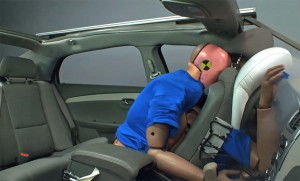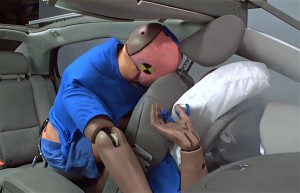While seat belt usage rates in the United States are – and have been – above 90% for more than a decade, there is still a “problem” area: rural America.
According to a new study from Centers for Disease Control, America’s most rural counties had motor-vehicle death rates 3 to 10 times higher than those in the most urban counties, largely due to a lack of seatbelt use.
“We know seat belts save lives,” said CDC Director Brenda Fitzgerald, M.D. “These findings remind us that no matter what kind of road you are traveling on, it is important for everyone to buckle up every time on every trip.”
CDC used data from the National Highway Traffic Safety Administration’s Fatality Analysis Reporting System (FARS) to identify passenger vehicle occupant deaths among adults ages 18 years or older. Data from CDC’s Behavioral Risk Factor Surveillance System (BRFSS) was used to estimate how often drivers and passengers used seat belts.
(Holiday traffic fatalities expected to be highest in a decade. For the story, Click Here.)
The study also found that in 2014, death rates for adult drivers and passengers grew as areas became more rural. Death rates per 100,000 population varied:
- In the West, from 3.9 in the most urban counties to 40.0 in the most rural counties.
- In the South, from 6.8 in the most urban counties to 29.2 in the most rural counties.
- In the Midwest, from 5.3 in the most urban counties to 25.8 in the most rural counties.
- In the Northeast, from 3.5 in the most urban counties to 10.8 in the most rural counties reported in the study.
Similarly, the proportion of drivers and passengers who were not buckled up at the time of the fatal crash was 44.4% in the most urban counties, compared with 61.3% in the most rural counties. Self-reported seat belt use was lower in rural counties, ranging from 74.7% in the most rural counties to 88.8% in the most urban counties.
“Although we know motor vehicle crash-related deaths have been historically higher in rural areas, this study shows that the more rural the area, the higher the risk,” said Laurie Beck, M.P.H., an epidemiologist in CDC’s Division of Unintentional Injury Prevention.
(Click Here for more about how driver assistance tech saves lives.)
“It also helps us confirm what works to prevent these crash deaths, such as primary enforcement seat belt laws and seat belt use. These new findings will allow us to better target our prevention efforts as we work toward zero road traffic deaths in the U.S.”
Earlier this year, the Insurance Institute for Highway Safety released a study showing that 91% of adults buckle up in the front seat, although that number drops to just 72% when they climb in the back of a vehicle.
In 2015, NHTSA reported there were 35,092 deaths and 2.44 million injuries on American roads, a 7.2% increase over the previous year and the largest percentage increase in nearly 50 years. Those figured rose 8% in 2016.
For the 2015 results, unbelted occupant deaths increased 5% overall, accounting for nearly half, 48%, of traffic fatalities. Part of that number comes from the aforementioned unbelted backseat passengers, according to the IIHS, who essentially become “projectiles” moving about the cabin of a vehicle during a collision.
(U.S. highway fatalities dip 1% during first half of 2017. Click Here for the full story.)
The University of Virginia in 2013 found the odds are 137% higher for drivers to be killed in crashes when the left rear passengers are unrestrained.



This is horrible. The safety is necessary when driving and a little negligence on anyone’s part can prove consequential. Some additions such as airbags are proving to be beneficial, adding over a million vehicles in which this feature has been added. Maybe airbags can be made a law. Some other features can be developed that might act as back up if seat belts have not been fastened. Some people actually face physical discomforts and problems if they wear a seatbelt. Especially for such people and others who forget to be responsible, some innovations can be done that act as Plan B in absence of seat belts.